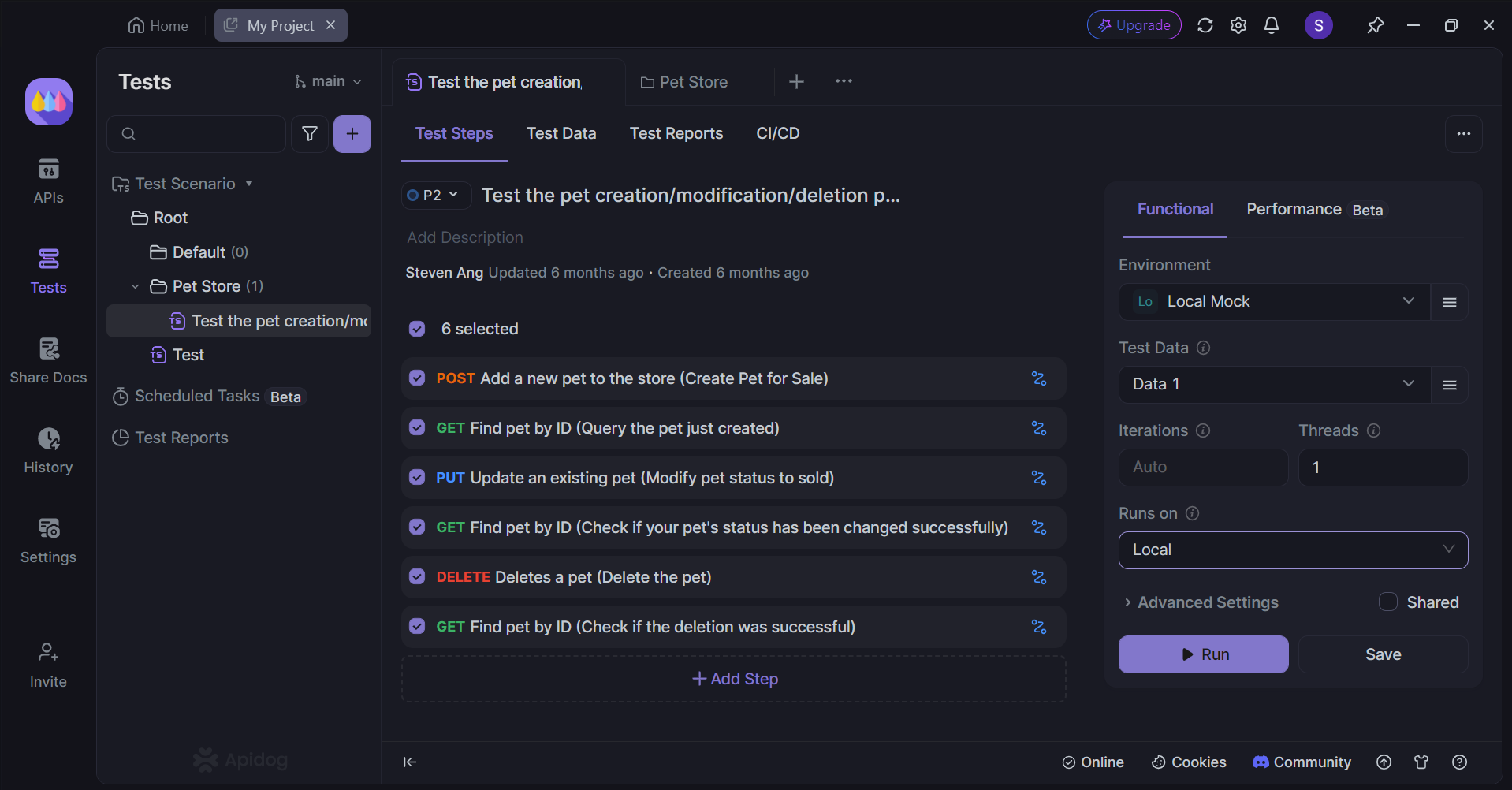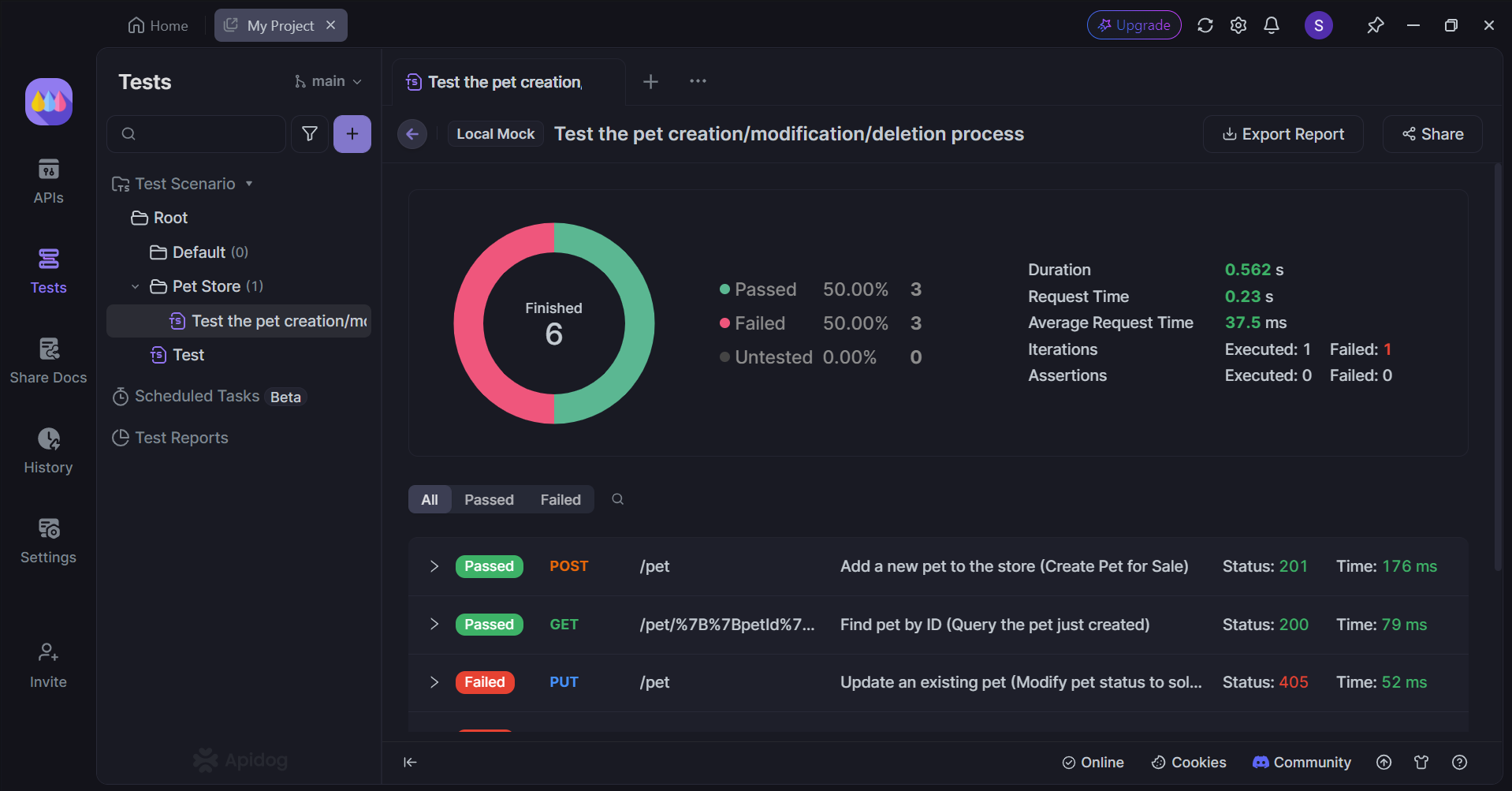Effective communication between various applications is essential. APIs (Application Programming Interfaces) provide developers with a standardized approach for facilitating such an interaction.
With Apidog, you can build, test, mock, and document APIs within a single application. To learn more about Apidog, click the button below!

This is where API gateways come into play, emerging as a critical intermediary that streamlines how clients can access and interact with a network of backend services. This article will therefore dive into the core functionalities of an API gateway, exploring its roles in enhancing application design and scalability.
What is an API Gateway
An API gateway is an intermediary that acts as a single point of entry for API communication. API gateways work together with the client side to work with services such as product catalogs, user databases, and payment processors, acting as a single entry point for all API requests.
API Gateway Core Functionalities
Single Entry Point: The API Gateway serves as the front door for all API requests. Imagine a busy office building – clients (applications) no longer need to navigate a maze of individual service doors. Instead, they interact solely with the receptionist (API Gateway) who directs them efficiently.
Request Routing: The Gateway acts as a traffic controller. It receives incoming API requests, analyzes their content (e.g., endpoint, parameters), and routes them to the appropriate backend service based on pre-defined rules. This eliminates the need for applications to understand the intricacies of each service location.
Request Transformation: APIs can come in different flavors (REST, GraphQL, etc.) and data formats (JSON, XML). The Gateway can act as a translator, transforming requests from one format or protocol to another, ensuring seamless communication between diverse services.
Response Aggregation: Sometimes, a single request might require data from multiple backend services. The Gateway acts as an orchestra conductor. It orchestrates calls to various services, collects individual responses, and assembles them into a cohesive response sent back to the application.
Security Enforcement: Security is paramount. The API Gateway acts as a guard at the castle gate. It enforces security policies like authentication (verifying user identity) and authorization (checking access rights) before granting access to backend services. This ensures that only authorized users or applications can interact with sensitive data.
Why Consider Using an API Gateway?
Untangle Complexity
Simplified Development: Traditionally, applications would need to interact with each backend service individually, requiring in-depth knowledge of their specific protocols and access points. This approach is not only time-consuming but also error-prone.
An API gateway acts as a single entry point, shielding developers from this complexity. They can focus on building core application logic, interacting solely with the gateway's well-defined interface.
Improved Maintainability: As your application and backend services evolve, an API gateway acts as a stable layer. Changes made to backend services (like a new authentication mechanism) can be implemented within the gateway, without affecting the application code. This reduces maintenance overhead and streamlines updates.
Boost Performance and Scalability
Enhanced Performance: API gateways can cache frequently accessed data, reducing the load on backend services and improving response times for your application. This translates to a faster and more responsive user experience.
Efficient Scaling: As your application grows and demands on backend services increase, an API gateway acts as a buffer. It allows you to easily add new services to the network without impacting existing applications. The gateway gracefully handles routing requests and scaling backend service utilization.
Fortify Security
Centralized Access Control: An API gateway acts as a security checkpoint. You can define and enforce access control policies at the gateway level, ensuring only authorized applications or users can interact with specific backend services and sensitive data. This centralized approach simplifies security management and reduces the risk of unauthorized access.
Improved Monitoring and Visibility: An API gateway provides a central point for monitoring API traffic. You can gain valuable insights into usage patterns, identify potential bottlenecks, and proactively address security threats. This comprehensive visibility allows for better decision-making and improved API governance.
Additional Advantages
Standardization: An API gateway enforces a consistent API design and communication protocol across your backend services. This promotes code reuse and simplifies integration with future services.
Developer Experience: API gateways can offer developer portals with documentation code.
Apidog - Manage API Development Better
If you are a developer trying to search for an API tool that can support professional API development, make sure you consider Apidog.

With Apidog, enjoy API development with a sleek and beautiful user interface. With everything displayed clearly on the screen, you can quickly learn and get adjusted to the new development environment, regardless if you are a new or experienced developer!
Design Your API with Complete Deetails

First, create a new endpoint with Apidog.

Proceed by selecting which HTTP method you wish, such as GET, POST, PUT, and DELETE. You should also:
- Set the API URL (or API endpoint) for client-server interaction
- Include one/multiple parameters to be passed in the API URL
- Provide a description of what functionality the API aims to provide.
Ensure API Functionality with Test Scenarios
Apidog has a unique testing feature called test scenarios.


With Apidog, you can visually test different APIs together in a series of consecutive steps. This is especially effective for developers who have created a chain of APIs that rely on each other to perform their functionalities.
Fix Your API By Observing the Report

Apidog will then return a detailed report on your test scenario, outlining the number of failed and successful requests, together with the total duration of all the APIs to complete them.
Single Out Bugs By Testing APIs Individually

Apidog supports developers who wish to test individual APIs and observe each response on its own. All you have to press the Run header, followed by the Send button, in that sequence.

Conclusion
The API Gateway stands as a cornerstone for efficient and secure API management. It streamlines communication between applications and a network of backend services, acting as a single entry point and traffic director. By offering functionalities like request routing, transformation, and aggregation, it simplifies development and enhances application performance. Additionally, the Gateway enforces security policies and centralizes monitoring, fostering a well-governed and secure API ecosystem. As the complexity of modern software architectures continues to grow, API Gateways will remain an indispensable tool for building robust and scalable applications.
For developers seeking a streamlined approach to API communication, or for organizations aiming to bolster their API security and governance, an API Gateway offers a compelling solution. Its ability to simplify development, enhance performance, and strengthen security makes it a valuable asset in today's software development landscape.




